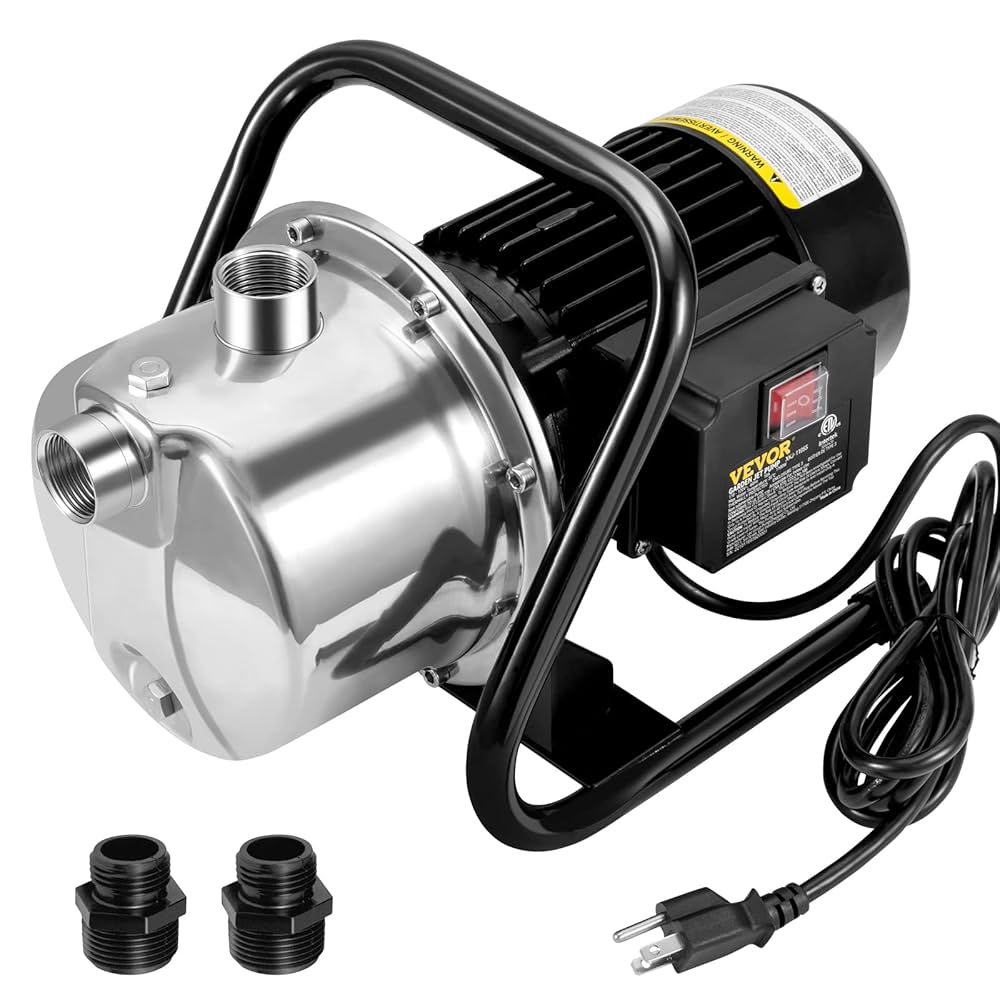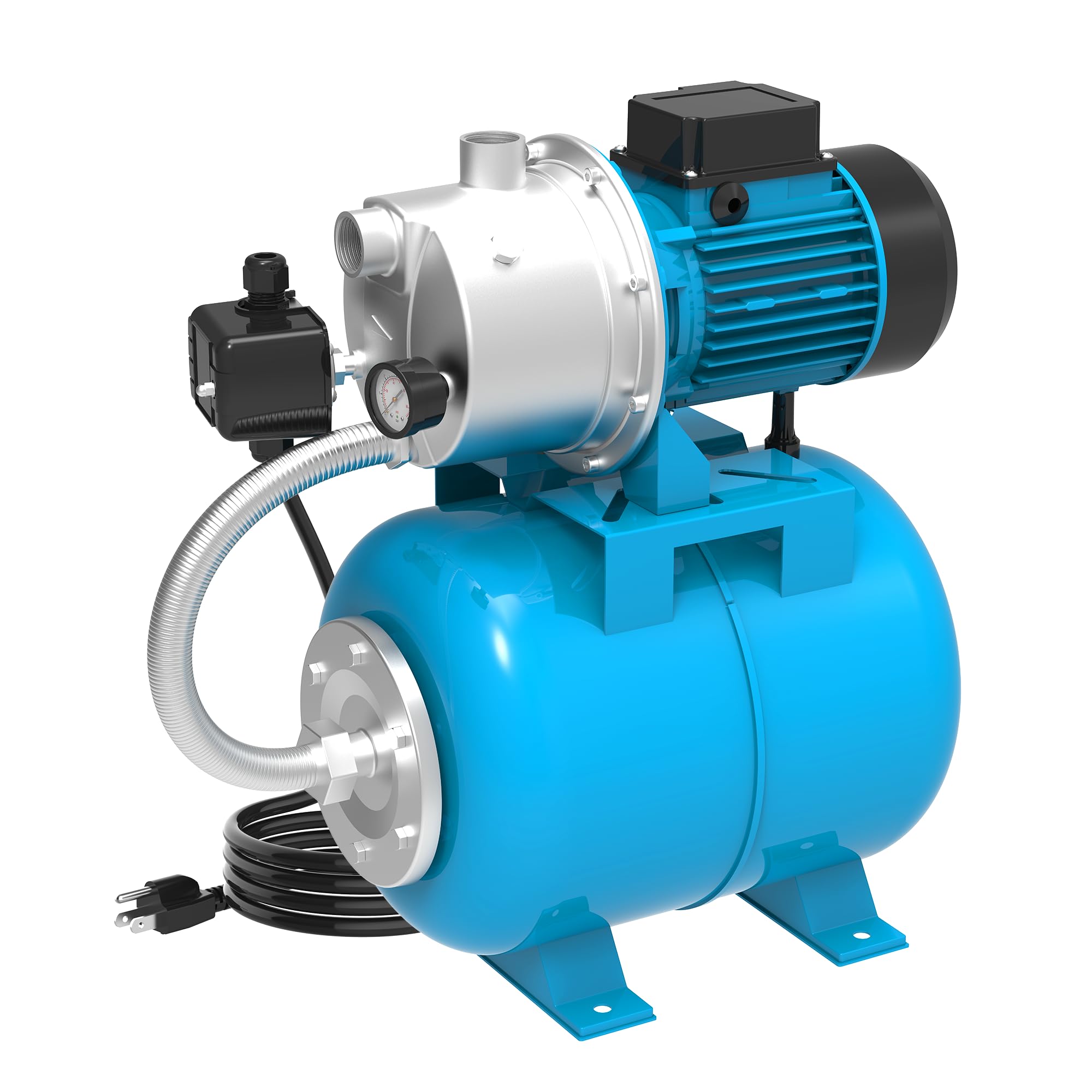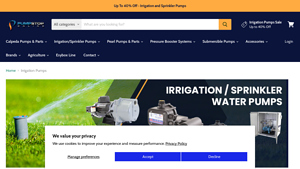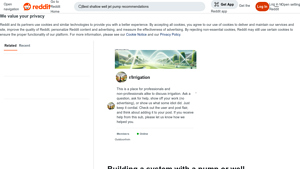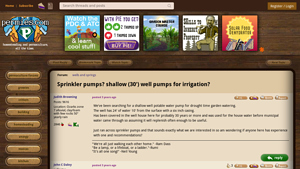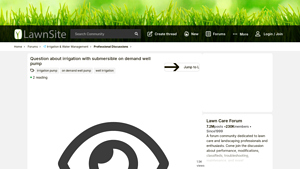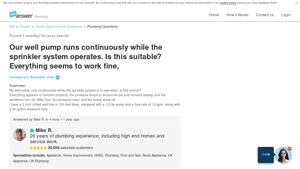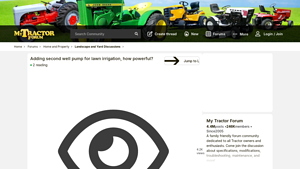Introduction: Navigating the Global Market for well pump for irrigation system
In today’s competitive agricultural landscape, sourcing the right well pump for an irrigation system can be a daunting task for international B2B buyers. With varying regional demands and diverse environmental conditions across Africa, South America, the Middle East, and Europe, selecting a pump that meets specific operational needs is crucial. This guide is designed to demystify the complexities of the global well pump market, offering insights into various types of pumps, their applications, and essential considerations for effective supplier vetting.
Throughout this comprehensive resource, we will explore the different categories of well pumps, including submersible and jet pumps, and examine their functionalities tailored to irrigation systems. Additionally, we will provide a detailed overview of cost factors and pricing trends, enabling buyers to budget effectively and identify value-driven solutions. By understanding the nuances of pump specifications and performance metrics, B2B buyers can make informed purchasing decisions that enhance irrigation efficiency and support sustainable agricultural practices.
Our goal is to empower you with the knowledge necessary to navigate the global market confidently, ensuring that your investments in well pumps yield optimal results. Whether you are operating in Vietnam’s rice paddies or Nigeria’s expansive farmlands, this guide is your key to unlocking the potential of effective irrigation systems.
Understanding well pump for irrigation system Types and Variations
| Type Name | Key Distinguishing Features | Primary B2B Applications | Brief Pros & Cons for Buyers |
|---|---|---|---|
| Submersible Well Pumps | Located underwater, high efficiency, low noise | Agricultural irrigation, municipal use | Pros: Space-saving, efficient; Cons: Installation complexity, may require specialized service. |
| Jet Pumps | Surface-mounted, self-priming, versatile | Residential and light commercial use | Pros: Easy installation, cost-effective; Cons: Limited depth capability, less efficient for deep wells. |
| Centrifugal Pumps | High flow rates, varied sizes, multi-stage options | Large-scale agriculture, industry | Pros: High efficiency, customizable; Cons: Requires proper sizing, potentially higher upfront costs. |
| Booster Pumps | Increases water pressure, compact design | Irrigation systems needing pressure boost | Pros: Improves system performance; Cons: May require additional power source, maintenance needs. |
| Solar-Powered Pumps | Renewable energy, environmentally friendly | Remote irrigation, sustainable farming | Pros: Low operating costs, eco-friendly; Cons: Initial setup costs, dependent on sunlight availability. |
What are Submersible Well Pumps and Their B2B Suitability?
Submersible well pumps are designed to operate underwater, making them ideal for deep well applications. Their high efficiency and low noise levels are particularly beneficial for agricultural irrigation and municipal water supply systems. B2B buyers should consider the installation complexity and potential need for specialized maintenance when purchasing submersible pumps, as these factors can impact overall costs and operational efficiency.
How Do Jet Pumps Function and Where Are They Used?
Jet pumps are surface-mounted and known for their self-priming capabilities, making them versatile for both residential and light commercial applications. They are generally easier to install and more cost-effective than submersible pumps, making them appealing to budget-conscious buyers. However, their limited depth capability may restrict their use in deeper well scenarios, which is a crucial consideration for B2B buyers in regions with varying groundwater levels.
What Advantages Do Centrifugal Pumps Offer for Large-Scale Applications?
Centrifugal pumps are characterized by their ability to provide high flow rates and come in various sizes and multi-stage options. They are particularly suited for large-scale agricultural irrigation and industrial applications due to their efficiency and customizable nature. B2B buyers should carefully evaluate the sizing requirements and potential higher upfront costs associated with centrifugal pumps, as improper sizing can lead to operational inefficiencies.
Why are Booster Pumps Important for Irrigation Systems?
Booster pumps play a critical role in increasing water pressure within irrigation systems, especially when existing pressure is insufficient. Their compact design allows for easy integration into existing setups. While they significantly enhance system performance, buyers should consider the need for an additional power source and ongoing maintenance, which can affect operational budgets.
What are the Benefits of Solar-Powered Pumps in B2B Applications?
Solar-powered pumps offer a sustainable solution for irrigation, particularly in remote areas where electricity may not be readily available. By utilizing renewable energy, these pumps can significantly reduce operating costs over time. However, B2B buyers must weigh the initial setup costs and the dependency on sunlight availability, as these factors can influence the long-term viability and efficiency of solar-powered pumping systems.
Key Industrial Applications of well pump for irrigation system
| Industry/Sector | Specific Application of well pump for irrigation system | Value/Benefit for the Business | Key Sourcing Considerations for this Application |
|---|---|---|---|
| Agriculture | Crop irrigation in large-scale farms | Enhanced crop yields and efficient water usage | Pump capacity, energy efficiency, and reliability in diverse climates |
| Horticulture | Greenhouse irrigation systems | Optimized water supply for plant growth and reduced operational costs | Durability, ease of maintenance, and compatibility with existing systems |
| Landscaping and Turf Management | Irrigation systems for parks and sports fields | Improved aesthetic appeal and healthy turf maintenance | Flexibility in design, pressure requirements, and installation support |
| Mining and Quarrying | Dust suppression and water supply for mining operations | Increased operational safety and compliance with environmental standards | Flow rate, material compatibility, and resistance to harsh conditions |
| Municipal Water Supply | Community irrigation systems for public parks and gardens | Sustainable water management and enhanced community wellbeing | Compliance with local regulations, cost-effectiveness, and scalability |
How is ‘Well Pump for Irrigation System’ Used in Agriculture?
In the agriculture sector, well pumps are critical for crop irrigation, especially in regions where rainfall is insufficient. These pumps facilitate the efficient delivery of water to vast fields, ensuring crops receive adequate hydration, which is essential for maximizing yields. Buyers in this industry must consider pump capacity, energy efficiency, and reliability, particularly in regions like Africa and South America where climate conditions can vary significantly. Additionally, understanding local water regulations and sustainability practices is vital for compliance and long-term viability.
What Role Does ‘Well Pump for Irrigation System’ Play in Horticulture?
In horticulture, well pumps are utilized in greenhouse irrigation systems to provide a consistent and controlled water supply. This application is crucial for the growth of sensitive plants that require specific moisture levels. By using well pumps, horticulturists can optimize their water usage, resulting in cost savings and improved plant health. Buyers should focus on the durability and ease of maintenance of these pumps, as well as their compatibility with existing irrigation systems, to ensure seamless operation.
How Do Well Pumps Benefit Landscaping and Turf Management?
Well pumps are essential in landscaping and turf management for maintaining the health of parks and sports fields. These pumps enable efficient irrigation, which helps sustain lush greenery and high-quality turf. The aesthetic appeal of well-maintained landscapes can significantly impact community satisfaction and property values. When sourcing pumps for these applications, businesses should consider flexibility in design, pressure requirements, and the availability of installation support to meet specific landscape needs.
What Applications Exist for ‘Well Pump for Irrigation System’ in Mining and Quarrying?
In the mining and quarrying industries, well pumps serve dual purposes: providing water for dust suppression and ensuring a reliable water supply for operational needs. Proper dust management is crucial for safety and compliance with environmental regulations. Buyers must prioritize flow rate, material compatibility, and the pump’s ability to withstand harsh operating conditions. This ensures that operations remain efficient and compliant with safety standards, particularly in arid regions where water access can be challenging.
How Can Municipalities Utilize ‘Well Pump for Irrigation Systems’?
Municipalities benefit from well pumps by implementing community irrigation systems in public parks and gardens. These systems promote sustainable water management practices while enhancing community spaces for recreational use. By sourcing well pumps that comply with local regulations and offer cost-effective solutions, municipalities can ensure that their irrigation systems are both efficient and environmentally friendly. Scalability is another key consideration, allowing for future expansion as community needs evolve.
3 Common User Pain Points for ‘well pump for irrigation system’ & Their Solutions
Scenario 1: Inconsistent Water Supply During Peak Irrigation Season
The Problem: B2B buyers often face the challenge of inconsistent water supply, especially during peak irrigation seasons. This can be particularly problematic in regions where the demand for water is high, such as during planting or harvesting periods. Inconsistent supply not only hampers crop growth but can also lead to economic losses, as farmers may miss critical watering windows. Additionally, the pressure fluctuations caused by inadequate well pump performance can lead to uneven irrigation, resulting in overwatered or underwatered areas.
The Solution: To address the issue of inconsistent water supply, buyers should consider investing in high-capacity submersible well pumps that can handle varying water demands. When sourcing pumps, it’s crucial to assess the specific irrigation needs and the depth of the water table. A well-designed pump system should include variable frequency drives (VFDs) that adjust the pump speed according to real-time water demand, ensuring a consistent flow. Additionally, implementing a comprehensive irrigation management system with moisture sensors can optimize water usage and prevent over-irrigation. Regular maintenance and monitoring of the pump’s performance can also help catch potential issues before they escalate.
Scenario 2: High Energy Costs Associated with Well Pumps
The Problem: Energy costs are a significant concern for B2B buyers operating well pumps for irrigation systems. Many users find that their energy bills skyrocket during high-demand seasons, particularly if their pumps are outdated or inefficient. This not only affects the operational budget but also raises concerns about sustainability and environmental impact. Buyers in regions where electricity costs are high may struggle to find cost-effective solutions without compromising on water delivery performance.
The Solution: To mitigate high energy costs, buyers should evaluate energy-efficient well pumps designed for optimal performance. Investing in modern pumps with higher efficiency ratings can lead to substantial savings in energy consumption. Additionally, implementing smart irrigation technologies that use weather data and soil moisture levels can help reduce unnecessary pumping. Integrating solar-powered systems is another viable solution, particularly in sunny regions where electricity costs are prohibitive. By conducting a thorough energy audit, buyers can identify peak usage times and adjust their irrigation schedules accordingly, further lowering energy expenses.
Scenario 3: Complications with Installation and Integration of Well Pumps
The Problem: Many B2B buyers encounter complications during the installation and integration of well pumps into existing irrigation systems. This can arise from a lack of compatibility with existing infrastructure or insufficient technical expertise among staff. Such complications not only delay the irrigation process but can also lead to increased labor costs and potential damage to the irrigation system if not handled correctly.
The Solution: To streamline the installation process, buyers should prioritize sourcing well pumps that offer compatibility with their existing systems. Engaging a professional irrigation consultant during the selection phase can ensure that the chosen pump meets all compatibility and performance requirements. Additionally, investing in training for staff on proper installation and maintenance practices can reduce the likelihood of complications. Buyers should also consider opting for pumps that come with comprehensive installation guides and customer support to facilitate a smooth setup. Finally, utilizing modular pump systems can allow for easier upgrades and integration into future irrigation expansions.
Strategic Material Selection Guide for well pump for irrigation system
When selecting materials for well pumps used in irrigation systems, it’s crucial to consider properties that directly affect performance, longevity, and suitability for specific applications. Below, we analyze four common materials: stainless steel, cast iron, thermoplastics, and bronze, highlighting their key properties, advantages, disadvantages, and considerations for international buyers.
What Are the Key Properties of Stainless Steel for Well Pumps?
Stainless steel is known for its excellent corrosion resistance, high strength, and ability to withstand elevated temperatures and pressures. Typically, grades like 304 and 316 are used, with 316 offering superior resistance to chlorides, making it suitable for coastal or saline environments. The material’s durability ensures a long lifespan, reducing maintenance costs over time.
Pros: Stainless steel pumps are highly durable and resistant to rust and corrosion, making them ideal for various water qualities. They can handle high-pressure applications and are suitable for a wide range of temperatures.
Cons: The primary drawback is the higher initial cost compared to other materials. Manufacturing complexity can also be a concern, as stainless steel requires specific machining techniques.
Impact on Application: Stainless steel is compatible with a variety of media, including potable water and agricultural chemicals, making it versatile for different irrigation needs.
Considerations for International Buyers: Compliance with international standards such as ASTM and ISO is essential. Buyers should also consider the availability of stainless steel grades in their region, as well as the impact of local environmental conditions on material selection.
How Does Cast Iron Perform in Well Pump Applications?
Cast iron is a traditional material widely used in well pumps due to its strength and durability. It has good wear resistance and can handle high pressures, making it suitable for deep well applications.
Pros: Cast iron pumps are robust and can withstand harsh conditions. They are generally less expensive than stainless steel and have a long service life when maintained properly.
Cons: However, cast iron is prone to rust and corrosion when exposed to moisture, especially in acidic or saline environments. This can lead to increased maintenance costs over time.
Impact on Application: Cast iron is suitable for freshwater applications but may not be ideal for corrosive environments. It is less compatible with certain chemicals, which could limit its use in specific irrigation scenarios.
Considerations for International Buyers: Buyers should ensure that cast iron pumps meet local standards and regulations, particularly regarding corrosion resistance. Additionally, understanding the local climate can help in assessing the longevity of cast iron pumps.
What Are the Advantages of Thermoplastics in Well Pumps?
Thermoplastics, such as PVC and polyethylene, are increasingly popular in well pump applications due to their lightweight nature and resistance to corrosion and chemicals.
Pros: These materials are generally less expensive and easier to manufacture than metals. They are also resistant to rust and can handle a variety of chemical exposures, making them suitable for various irrigation applications.
Cons: The main limitation is their lower strength compared to metals, which can restrict their use in high-pressure situations. They may also have a shorter lifespan under extreme temperature conditions.
Impact on Application: Thermoplastics are ideal for non-potable water applications and can handle a range of irrigation chemicals, making them versatile for agricultural use.
Considerations for International Buyers: Buyers should check for compliance with local standards and ensure that the selected thermoplastic can withstand the specific chemicals used in their irrigation systems.
Why Choose Bronze for Well Pumps?
Bronze, particularly when alloyed with tin or aluminum, is another viable material for well pumps. Its excellent corrosion resistance and strength make it a suitable choice for various applications.
Pros: Bronze pumps are highly resistant to corrosion, especially in saline environments, and have good wear resistance. They also have a longer lifespan compared to many other materials.
Cons: The main drawback is the cost, as bronze can be significantly more expensive than cast iron or thermoplastics. Additionally, the manufacturing process can be more complex.
Impact on Application: Bronze is suitable for both potable and non-potable water applications, making it versatile for different irrigation needs.
Considerations for International Buyers: Buyers should ensure that bronze pumps comply with local health and safety standards, especially when used for potable water applications.
Summary Table of Material Selection for Well Pumps
| Material | Typical Use Case for well pump for irrigation system | Key Advantage | Key Disadvantage/Limitation | Relative Cost (Low/Med/High) |
|---|---|---|---|---|
| Stainless Steel | Potable water and agricultural chemicals | Excellent corrosion resistance | Higher initial cost | High |
| Cast Iron | Freshwater applications | Robust and durable | Prone to rust in corrosive environments | Medium |
| Thermoplastics | Non-potable water and chemical irrigation | Lightweight and cost-effective | Lower strength under high pressure | Low |
| Bronze | Potable and non-potable water | High corrosion resistance | Higher cost and complex manufacturing | High |
This guide aims to equip international B2B buyers with the necessary insights to make informed decisions regarding material selection for well pumps in irrigation systems, ensuring optimal performance and compliance with local standards.
In-depth Look: Manufacturing Processes and Quality Assurance for well pump for irrigation system
What Are the Key Stages in the Manufacturing Process of Well Pumps for Irrigation Systems?
The manufacturing process for well pumps designed for irrigation systems involves several critical stages, each essential to ensuring the final product’s performance and reliability. Understanding these stages helps international B2B buyers identify quality products that meet their specific irrigation needs.
Material Preparation: What Materials Are Used in Well Pump Manufacturing?
The first stage involves selecting high-quality raw materials, typically including stainless steel, cast iron, and various plastics. Stainless steel is often favored for components like impellers and shafts due to its corrosion resistance and durability, especially in harsh environments. Cast iron is commonly used for pump bodies, providing strength and stability. Additionally, high-performance seals and gaskets made from specialized polymers ensure that the pumps maintain operational efficiency while preventing leaks.
Forming: How Are Well Pump Components Shaped and Crafted?
Once the materials are selected, the forming process begins. This stage may include techniques such as casting, forging, and machining. For instance, cast iron components are often produced through sand casting, where molten iron is poured into molds to create the desired shapes. Machining processes, such as CNC (Computer Numerical Control) machining, are employed to achieve precise dimensions on critical components like shafts and impellers. This precision is vital for optimal pump performance and longevity.
Assembly: What Steps Are Involved in Assembling Well Pumps?
After forming the individual components, the assembly stage takes place. This involves fitting the various parts together to create a complete pump. During assembly, attention is paid to tolerances and alignment to ensure that moving parts operate smoothly. In many facilities, assembly is performed using specialized tools and fixtures that help maintain consistent quality. Teams often follow detailed assembly instructions and checklists to ensure that no steps are overlooked, which is crucial for maintaining high-quality standards.
Finishing: How Is Quality Achieved in the Final Touches?
The finishing stage focuses on enhancing the pump’s durability and aesthetic appeal. This may include processes such as surface treatment, painting, or coating with protective materials to prevent corrosion. Additionally, final inspections are conducted to check for defects, ensuring that each pump meets the specified standards before leaving the production line.
What Quality Assurance Processes Are Critical in Well Pump Manufacturing?
Quality assurance (QA) is a vital part of the manufacturing process, ensuring that each well pump meets international standards and customer expectations. B2B buyers should be aware of the various QA processes and certifications that can impact their purchasing decisions.
Which International Standards Should Buyers Consider?
International standards such as ISO 9001 are essential for ensuring a systematic approach to quality management. This standard focuses on continuous improvement and customer satisfaction, which are crucial in the manufacturing of well pumps. Additionally, industry-specific certifications like CE (Conformité Européenne) and API (American Petroleum Institute) are important for products intended for specific markets. These certifications indicate compliance with safety, health, and environmental protection standards.
What Are the Key Quality Control Checkpoints in Manufacturing?
Quality control (QC) checkpoints are integrated throughout the manufacturing process to catch defects early. These checkpoints typically include:
- Incoming Quality Control (IQC): This phase involves inspecting raw materials upon arrival to ensure they meet specified standards.
- In-Process Quality Control (IPQC): Inspections during the manufacturing process help identify issues before they result in defective products. This may involve monitoring dimensions, tolerances, and assembly techniques.
- Final Quality Control (FQC): At this stage, finished pumps are thoroughly tested for functionality, performance, and safety before shipment.
What Testing Methods Are Commonly Used for Well Pumps?
Testing methods vary but commonly include performance tests, pressure tests, and vibration analysis. Performance tests assess the pump’s capacity, efficiency, and operational parameters under different conditions. Pressure tests ensure that the pumps can withstand the required operating pressures without failure. Vibration analysis helps identify potential mechanical issues that could affect longevity and performance.
How Can B2B Buyers Verify Supplier Quality Control?
For B2B buyers, verifying a supplier’s quality control processes is crucial in ensuring product reliability. Here are several methods to consider:
What Role Do Audits and Reports Play in Supplier Verification?
Conducting audits of potential suppliers can provide insight into their manufacturing and quality assurance processes. Buyers should request detailed reports on the supplier’s quality management system, including certifications, quality control procedures, and any third-party inspections conducted. These audits can be scheduled as part of the supplier selection process to ensure compliance with international standards.
How Can Third-Party Inspections Enhance Buyer Confidence?
Engaging third-party inspection services can further validate a supplier’s claims regarding product quality. Independent inspectors can evaluate manufacturing processes, conduct performance tests, and verify compliance with international standards. This added layer of scrutiny helps mitigate risks associated with subpar products and enhances buyer confidence in their procurement decisions.
What Are the Specific Quality Control Nuances for International B2B Buyers?
For buyers from regions like Africa, South America, the Middle East, and Europe, understanding the nuances of quality control is essential. Different markets may have varying regulations, standards, and expectations regarding product quality and safety.
How Do Regional Standards Affect Quality Assurance?
International buyers must be aware of specific regional standards that may apply to irrigation pumps. For example, buyers in Europe may require CE marking for compliance with EU regulations, while those in the Middle East might need to meet specific local certifications. Understanding these requirements ensures that products are not only suitable for their intended use but also compliant with local laws.
What Should Buyers Look for in Supplier Communication Regarding QC?
Effective communication with suppliers about their quality control processes is vital. Buyers should inquire about how suppliers track and address quality issues, their approach to continuous improvement, and how they handle customer feedback. Clear communication channels can help build trust and ensure that both parties are aligned on quality expectations.
By comprehensively understanding the manufacturing processes and quality assurance measures in the production of well pumps for irrigation systems, B2B buyers can make informed purchasing decisions. Investing time in evaluating suppliers based on their manufacturing capabilities and quality standards can lead to enhanced operational efficiency and long-term success in irrigation projects.
Practical Sourcing Guide: A Step-by-Step Checklist for ‘well pump for irrigation system’
Introduction
Sourcing a well pump for an irrigation system is a critical decision that impacts agricultural productivity and resource efficiency. This guide serves as a practical checklist to help B2B buyers navigate the procurement process effectively, ensuring that they choose a pump that meets their specific needs while aligning with regional conditions and compliance standards.
Step 1: Define Your Technical Specifications
Understanding your irrigation system’s requirements is essential before initiating the procurement process. Consider factors such as the type of crops, the area to be irrigated, and the water source depth. This step will help you identify the necessary pump capacity, flow rate, and head pressure, ensuring that the selected pump can deliver adequate water supply efficiently.
Step 2: Research Available Pump Types
Familiarize yourself with different well pump types, including submersible, jet, and centrifugal pumps. Each type has unique advantages and is suited for specific applications. For instance, submersible pumps are ideal for deep wells, while jet pumps work well for shallow wells. Understanding these distinctions will help you make an informed choice that aligns with your irrigation requirements.
Step 3: Evaluate Potential Suppliers
Before committing to a purchase, it’s crucial to vet potential suppliers thoroughly. Request company profiles, case studies, and references from buyers in a similar industry or region. Ensure that the suppliers have a proven track record in providing reliable pumps and support services.
- Check for Certifications: Ensure that suppliers hold relevant industry certifications and comply with local regulations, which can indicate their reliability and product quality.
- Assess After-Sales Support: Evaluate the level of customer service and support offered, including installation, maintenance, and warranty options.
Step 4: Compare Pricing and Value
Once you have a shortlist of potential suppliers, compare pricing structures while considering the value offered. Look beyond the initial cost and evaluate factors such as energy efficiency, durability, and maintenance requirements. A higher upfront investment may result in lower long-term operational costs.
- Request Quotes: Obtain detailed quotations from multiple suppliers to facilitate a direct comparison.
- Negotiate Terms: Don’t hesitate to negotiate payment terms, delivery schedules, and installation support to get the best overall deal.
Step 5: Conduct Site Assessments
If possible, conduct site assessments to understand the specific conditions where the pump will be installed. This includes evaluating the geological characteristics, water quality, and existing infrastructure. Having this data will help you refine your choices and ensure that the pump is compatible with your irrigation setup.
Step 6: Finalize Contracts and Agreements
Once you’ve selected a supplier, ensure that all terms and conditions are documented clearly in a contract. Pay special attention to delivery timelines, payment schedules, and warranty details. Having a well-defined agreement will help prevent misunderstandings and ensure accountability.
Step 7: Plan for Installation and Training
Finally, coordinate the installation process and ensure that relevant staff are trained on operating and maintaining the pump. Proper installation and knowledge of the system will maximize efficiency and longevity. Consider scheduling a follow-up visit with the supplier to address any initial operational issues.
By following this comprehensive checklist, B2B buyers can confidently source a well pump for their irrigation systems, ensuring optimal performance and return on investment.
Comprehensive Cost and Pricing Analysis for well pump for irrigation system Sourcing
What Are the Key Cost Components in Sourcing Well Pumps for Irrigation Systems?
When sourcing well pumps for irrigation systems, understanding the cost structure is crucial for international B2B buyers. The primary cost components include materials, labor, manufacturing overhead, tooling, quality control (QC), logistics, and profit margins.
Materials: The choice of materials significantly impacts the overall cost. For instance, pumps made from high-grade stainless steel or bronze impellers typically command higher prices due to their durability and resistance to corrosion.
Labor: Labor costs vary by region and can be influenced by local wage standards. Countries with lower labor costs may offer competitive pricing, but this can sometimes compromise quality.
Manufacturing Overhead: This encompasses the indirect costs associated with production, such as utilities, rent, and administrative expenses. Efficient manufacturing processes can help reduce overheads, resulting in more competitive pricing.
Tooling: Specialized tooling may be required for custom or complex pump designs. While this increases initial costs, it can lead to better performance and longevity of the pump.
Quality Control (QC): Rigorous QC processes ensure that pumps meet industry standards. This can add to the cost but is essential for minimizing failures and enhancing customer satisfaction.
Logistics: Transportation and handling costs can vary widely based on the pump’s size, weight, and destination. International shipping, customs duties, and insurance are critical considerations that can significantly affect the total cost.
Margin: Suppliers typically add a profit margin to cover their costs and ensure sustainability. Margins can vary based on market competition and demand.
How Do Price Influencers Impact the Cost of Well Pumps for Irrigation Systems?
Several factors can influence the pricing of well pumps for irrigation systems.
Volume/MOQ: Purchasing in bulk often leads to lower prices per unit. Buyers should negotiate minimum order quantities (MOQs) to achieve better pricing.
Specifications and Customization: Customized pumps tailored to specific irrigation needs may incur additional costs. Understanding the necessity for customization versus standard options can help buyers make informed decisions.
Materials: The use of advanced materials can enhance pump efficiency but may also increase costs. Buyers should evaluate the long-term benefits of higher-quality materials.
Quality and Certifications: Pumps that meet international standards and certifications often come at a premium. However, these certifications can assure buyers of reliability and compliance with local regulations.
Supplier Factors: The reputation and reliability of the supplier can impact pricing. Established suppliers may charge more due to their proven track record and customer service.
Incoterms: Understanding the Incoterms can affect the overall pricing strategy, as they define the responsibilities of buyers and sellers regarding shipping and logistics.
What Are the Best Buyer Tips for Negotiating Well Pump Prices in International Markets?
International buyers should adopt strategic approaches to ensure cost-efficiency when sourcing well pumps.
Negotiation: Don’t hesitate to negotiate prices and terms. Suppliers may have flexibility, especially for larger orders or long-term contracts.
Cost-Efficiency: Assess the Total Cost of Ownership (TCO), which includes initial purchase price, installation, maintenance, and operational costs. A cheaper upfront cost may not always be the most economical choice in the long run.
Pricing Nuances for International Buyers: Be aware of currency fluctuations, tariffs, and trade regulations that may affect pricing. Understanding the local market dynamics can provide leverage during negotiations.
Supplier Relationships: Building strong relationships with suppliers can lead to better pricing, improved service, and priority during stock shortages.
Disclaimer
Prices for well pumps can vary significantly based on market conditions, specifications, and supplier agreements. The figures mentioned are indicative and should be verified with suppliers for accuracy before making purchasing decisions.
Alternatives Analysis: Comparing well pump for irrigation system With Other Solutions
Exploring Alternatives to Well Pumps for Irrigation Systems
When considering irrigation solutions, it is essential to evaluate various technologies that can achieve similar outcomes as well pumps. Understanding the performance, cost, ease of implementation, maintenance requirements, and ideal applications of these alternatives can help international B2B buyers make informed decisions tailored to their unique agricultural or landscaping needs.
| Comparison Aspect | Well Pump for Irrigation System | Drip Irrigation System | Surface Water Irrigation |
|---|---|---|---|
| Performance | High efficiency in deep water extraction; suitable for large areas. | Highly efficient water use; delivers water directly to roots. | Varies based on water source; can be less efficient in dry conditions. |
| Cost | Moderate initial investment; ongoing energy costs for operation. | Higher initial setup cost; lower operational costs due to water savings. | Generally low initial cost; dependent on water availability and labor. |
| Ease of Implementation | Requires professional installation; may need electrical work. | Installation can be complex, requiring layout planning. | Simple setup; relies on gravity flow, but dependent on landscape. |
| Maintenance | Regular maintenance needed for pump efficiency; potential for mechanical failure. | Minimal maintenance; regular checks on emitters and filters needed. | Low maintenance; occasional checks for blockages and sediment buildup. |
| Best Use Case | Ideal for large-scale farms with deep wells. | Best for small to medium farms focused on water conservation. | Suitable for areas with abundant surface water; less control over water delivery. |
What Are the Advantages and Disadvantages of Drip Irrigation Systems?
Drip irrigation systems provide a highly efficient method for delivering water directly to the plant roots, minimizing evaporation and runoff. This technology is particularly advantageous for regions facing water scarcity, as it allows for precise water application tailored to the needs of various crops. However, the initial setup can be costly and complex, requiring careful planning and design to ensure effective coverage. Additionally, drip systems may need regular checks to prevent emitter clogging and ensure optimal performance.
How Does Surface Water Irrigation Compare to Well Pumps?
Surface water irrigation relies on gravity to distribute water across the fields, making it an accessible and cost-effective solution, particularly in areas with ample surface water sources. This method is straightforward to implement, typically involving the creation of ditches or furrows to direct water flow. However, it may not be as efficient in terms of water usage, especially in arid regions, and can lead to uneven distribution if not managed properly. Furthermore, reliance on surface water can pose challenges during dry seasons, making it less reliable than well pumps in certain climates.
Conclusion: Which Irrigation Solution Should B2B Buyers Choose?
Selecting the right irrigation solution depends on various factors, including budget constraints, the scale of the operation, and specific environmental conditions. Well pumps offer robust capabilities for extracting water from deep sources and are well-suited for large agricultural enterprises. In contrast, drip irrigation systems provide an eco-friendly alternative that maximizes water efficiency, ideal for smaller farms or regions with water restrictions. Surface water irrigation serves as a low-cost option but may lack reliability during dry periods. B2B buyers should assess their unique requirements, including water availability, crop types, and long-term sustainability goals, to determine the best solution for their irrigation needs.
Essential Technical Properties and Trade Terminology for well pump for irrigation system
What Are the Key Technical Properties of Well Pumps for Irrigation Systems?
When selecting well pumps for irrigation systems, understanding the technical specifications is crucial for ensuring optimal performance and longevity. Here are some essential properties to consider:
Flow Rate (GPM)
The flow rate, measured in gallons per minute (GPM), indicates how much water a pump can deliver within a specified time. For irrigation applications, selecting a pump with an appropriate flow rate is vital for meeting the water demands of crops or landscapes. A higher flow rate can reduce the time needed for irrigation, improving efficiency.Total Dynamic Head (TDH)
Total Dynamic Head refers to the total height a pump can raise water, accounting for factors like elevation changes, friction loss, and pressure requirements. Understanding TDH is essential for ensuring that the pump can deliver water to the necessary height and distance, particularly in uneven terrains common in many agricultural areas.Material Grade
The materials used in constructing a well pump, such as stainless steel or thermoplastic, directly affect its durability and resistance to corrosion, especially in harsh environments. For B2B buyers, choosing pumps made from high-grade materials can lead to lower maintenance costs and extended service life, which is crucial for long-term investment.Power Rating (HP)
The power rating, typically expressed in horsepower (HP), indicates the pump’s energy consumption and its capability to handle the required workload. Selecting a pump with an adequate power rating ensures it operates efficiently without overloading, which can lead to mechanical failures and increased operational costs.Pump Type (Submersible vs. Jet Pump)
Different pump types serve distinct applications; submersible pumps are submerged in water and are ideal for deep well applications, while jet pumps are suitable for shallow wells. Understanding the application and the environment will help buyers choose the right type, optimizing performance and reducing energy consumption.
What Common Trade Terms Should B2B Buyers Understand When Purchasing Well Pumps?
Familiarity with industry jargon can significantly streamline the purchasing process. Here are some key terms to know:
OEM (Original Equipment Manufacturer)
OEM refers to companies that produce parts or equipment that may be marketed by another manufacturer. Understanding OEM can help buyers identify reliable sources for replacement parts and ensure compatibility with existing systems.MOQ (Minimum Order Quantity)
MOQ is the smallest number of units a supplier is willing to sell. Knowing the MOQ is crucial for buyers, as it affects inventory management and cost efficiency. Buyers should negotiate MOQ to align with their operational needs.RFQ (Request for Quotation)
An RFQ is a document sent to suppliers to request pricing and terms for specific products. For B2B buyers, issuing an RFQ can facilitate comparison shopping and ensure they receive competitive pricing, essential in budget-sensitive markets.Incoterms (International Commercial Terms)
Incoterms are international trade terms that define the responsibilities of buyers and sellers in the shipping process. Familiarity with Incoterms helps B2B buyers understand shipping costs, insurance, and delivery responsibilities, which is critical for effective supply chain management.Lead Time
Lead time refers to the period from placing an order to receiving the product. Understanding lead times is important for planning, especially in agriculture where timing can significantly impact crop yields. Buyers should factor in lead times when scheduling irrigation systems.Warranty and Service Agreements
Warranties and service agreements dictate the terms of repair or replacement should a product fail. For B2B buyers, knowing these terms is vital for assessing the long-term reliability and support associated with their pump investment.
By understanding these technical properties and trade terms, B2B buyers can make informed decisions, ensuring their irrigation systems operate effectively and efficiently.
Navigating Market Dynamics and Sourcing Trends in the well pump for irrigation system Sector
What Are the Key Market Dynamics and Trends Affecting Well Pumps for Irrigation Systems?
The global market for well pumps used in irrigation systems is witnessing significant transformation driven by several factors. Increasing agricultural productivity to meet the growing food demand, especially in regions like Africa, South America, and parts of Europe, is a primary driver. The integration of advanced technologies such as IoT and automation is reshaping sourcing strategies, enabling real-time monitoring and management of irrigation systems. B2B buyers are increasingly seeking pumps with smart features that enhance efficiency and reduce water wastage.
Emerging trends also highlight the shift towards submersible and solar-powered pumps, particularly in regions where electricity supply is inconsistent. These pumps not only offer operational efficiency but also align with the sustainable farming practices that are becoming crucial in the agricultural sector. International buyers are urged to consider suppliers that provide robust warranties and after-sales support, ensuring long-term reliability and performance of their irrigation systems.
Moreover, as climate change intensifies, there is a growing focus on drought-resistant irrigation solutions. B2B buyers must stay informed about innovations that enhance water conservation, such as pressure booster pumps, which are essential for optimizing water distribution in various terrains. Understanding these market dynamics is critical for making informed sourcing decisions that can lead to sustainable agricultural practices.
How Can Sustainability and Ethical Sourcing Impact Your B2B Decisions in the Well Pump Market?
Sustainability has become a vital consideration for B2B buyers in the well pump sector, particularly as environmental regulations tighten globally. The production of well pumps can have substantial environmental impacts, from resource extraction to manufacturing processes. Buyers are increasingly prioritizing suppliers who demonstrate a commitment to ethical sourcing practices, ensuring that materials used are sustainably harvested and that their supply chains are transparent.
Investing in well pumps that feature ‘green’ certifications or eco-friendly materials can significantly enhance a company’s reputation and appeal to environmentally conscious consumers. For instance, pumps made from recyclable materials or those that incorporate energy-efficient technologies contribute to lower operational footprints, aligning with global sustainability goals.
Furthermore, ethical sourcing helps mitigate risks associated with supply chain disruptions and promotes long-term partnerships with suppliers who share similar values regarding environmental stewardship. B2B buyers are encouraged to conduct thorough audits of their suppliers’ practices, assessing not only the products they offer but also their sustainability credentials and commitment to ethical production.
What Is the Historical Context of Well Pumps for Irrigation Systems?
The history of well pumps for irrigation systems dates back centuries, evolving from simple manual devices to the advanced mechanized solutions available today. Initially, water was lifted manually or via animal-driven devices, which limited irrigation capabilities and efficiency. The Industrial Revolution marked a significant turning point, introducing steam-powered pumps that dramatically improved water access for agricultural purposes.
As technology progressed, electric and diesel-powered pumps emerged, facilitating the expansion of irrigated agriculture. The late 20th century saw the introduction of submersible pumps, which offered enhanced performance and reliability for deep well applications. Today, the focus is increasingly on integrating smart technologies and sustainable practices, marking a new era for well pumps that aligns with the demands of modern agriculture and environmental responsibility.
In summary, understanding the current market dynamics, emphasizing sustainability, and recognizing the historical evolution of well pumps are essential for B2B buyers looking to make informed, strategic decisions in the irrigation sector.
Frequently Asked Questions (FAQs) for B2B Buyers of well pump for irrigation system
How do I choose the right well pump for my irrigation system?
Selecting the right well pump depends on several factors, including the depth of the well, the required flow rate, and the specific irrigation needs of your crops. Start by assessing the well depth and the static water level to determine if a submersible or jet pump is more suitable. For higher flow rates, submersible pumps are often preferred. Additionally, consider the pump’s efficiency, energy consumption, and maintenance requirements to ensure it aligns with your operational budget and sustainability goals.What is the best type of well pump for agricultural irrigation?
The best type of well pump for agricultural irrigation typically is a submersible pump due to its efficiency in deep wells and ability to provide a steady flow rate. However, jet pumps can also be effective for shallower wells. When selecting a pump, evaluate the specific irrigation methods you’ll employ (e.g., drip, sprinkler) and ensure the pump’s specifications match your system’s requirements for optimal performance.What should I consider when vetting suppliers for well pumps?
When vetting suppliers for well pumps, evaluate their experience in the industry, product quality certifications, and customer reviews. Request references from previous clients and assess their responsiveness to inquiries. Additionally, consider the supplier’s ability to provide technical support, warranty terms, and after-sales service. A supplier with a solid reputation and a track record of reliability is crucial for ensuring a successful partnership.What are the typical minimum order quantities (MOQs) for well pumps?
Minimum order quantities (MOQs) for well pumps can vary significantly between suppliers and regions. Generally, MOQs may range from a single unit for smaller suppliers to several dozen units for larger manufacturers. It’s advisable to discuss your specific needs with potential suppliers to negotiate MOQs that align with your purchasing capacity while ensuring you maintain cost efficiency.How can I customize well pumps to meet specific irrigation requirements?
Customization options for well pumps often include modifications to flow rates, motor sizes, and control systems. Many manufacturers can adjust the pump design based on your irrigation system’s specific needs, including the type of crops you are irrigating. Engage with suppliers early in the sourcing process to discuss your customization requirements, ensuring they can accommodate your specifications within their production capabilities.What payment terms should I expect when purchasing well pumps internationally?
Payment terms for international purchases of well pumps can vary widely. Common practices include a deposit (often 30-50%) upfront with the balance due prior to shipment or upon delivery. Some suppliers may offer payment through letters of credit or installment plans based on agreed milestones. Always clarify payment terms upfront to avoid misunderstandings and ensure they are favorable for both parties.What quality assurance measures should I look for in well pumps?
Quality assurance measures in well pumps typically include compliance with international standards such as ISO or CE certifications. Look for suppliers that provide detailed testing reports and warranties for their products. Additionally, inquire about their manufacturing processes, quality control protocols, and after-sales support to ensure the pumps meet your operational standards and will perform reliably in your irrigation system.What are the logistics considerations when importing well pumps?
Logistics considerations for importing well pumps include understanding shipping options, customs regulations, and potential tariffs. It’s crucial to work with a logistics partner experienced in international trade to navigate these complexities. Ensure your supplier provides necessary documentation for customs clearance, and consider the lead times for production and shipping to align with your irrigation schedules. Effective communication with both the supplier and logistics provider can mitigate delays and ensure a smooth import process.
Important Disclaimer & Terms of Use
⚠️ Important Disclaimer
The information provided in this guide, including content regarding manufacturers, technical specifications, and market analysis, is for informational and educational purposes only. It does not constitute professional procurement advice, financial advice, or legal advice.
While we have made every effort to ensure the accuracy and timeliness of the information, we are not responsible for any errors, omissions, or outdated information. Market conditions, company details, and technical standards are subject to change.
B2B buyers must conduct their own independent and thorough due diligence before making any purchasing decisions. This includes contacting suppliers directly, verifying certifications, requesting samples, and seeking professional consultation. The risk of relying on any information in this guide is borne solely by the reader.
Top 7 Well Pump For Irrigation System Manufacturers & Suppliers List
1. Pump Stop Online – Irrigation Pumps
Domain: pumpstoponline.com
Registered: 2016 (9 years)
Introduction: Irrigation Pumps available at Pump Stop Online include various types such as:
– Water Pressure Booster Pumps (15 GPM, 17 GPM, 25 GPM) with prices ranging from $1,022.00 to $1,330.70, featuring self-priming capabilities and designed for irrigation and home use.
– Pearl Irrigation Jet Pump for Shallow Wells (Model IRONJ) priced from $989.00, self-priming after initial priming.
– Pearl Centrifugal…
2. Irrigation Systems – Essential Pumping Techniques
Domain: reddit.com
Registered: 2005 (20 years)
Introduction: The text discusses various methods for building an irrigation system using pumps and wells. Key points include: 1. Importance of understanding pump sizing based on flow (gpm) and distance from the pump to the furthest valve. 2. Three options for turning the pump on and off: a) Pressure switch with a pressure tank, b) Pump start relay connected to a controller, c) Variable frequency drive for maint…
3. Irrigation Outlet – Submersible Well Pumps
Domain: irrigationoutlet.com
Introduction: Submersible Well Pumps
4. Permies – Sprinkler Pumps for Shallow Wells
Domain: permies.com
Introduction: Sprinkler pumps for shallow wells (up to 30′ deep) are suitable for irrigation. Key considerations include:
– Well depth: 24′ of water, 10′ from the surface, with a 6-inch casing.
– Cost: Approximately $150 depending on brand and quality.
– Recommendations: Use a bladder tank to prevent the pump from switching on and off frequently, and ensure the pump can handle the lift required (10′ down to …
5. LawnSite – Submersible Well Pump & Irrigation System
Domain: lawnsite.com
Introduction: Submersible well pump: 1.5 hp, set at 30 to 60 psi, flow rate: 15 gpm. Above ground irrigation pump: intended to run in conjunction with the submersible pump to supply sprinkler pump with injection water. System design: 16 zones, average of 6 rotors per zone. Distance from well casing to home: approximately 300 feet with a 25-foot elevation incline. Grunfos Scala 2 installed for culinary water in …
6. JustAnswer – Well Pump Specifications
Domain: justanswer.com
Registered: 2004 (21 years)
Introduction: Well pump specifications: 3-inch drilled well, 100 feet deep, 1/2 hp pump, flow rate of 13 gpm, 20-gallon pressure tank. Recommended air pressure for the tank: 38 psi (2 psi below pump cut-in pressure of 40 psi).
7. Flowtec – Replacement Pump Options
Domain: mytractorforum.com
Registered: 2005 (20 years)
Introduction: Old shallow well pump: 1/2 hp; Replacement pump options: 3/4 hp or 1 hp; Recommended brand: Flowtec; New pump considerations: Hallmark Industries Deep Well Submersible Pump, 1HP, 4″; Pressure tank option: Custom PK1A PSIDE-KICK Pressure Tank Kit; Suggested pressure: 45-60 PSI for 4-5 sprinkler heads; Well depth: 18 ft; Usage: oscillating sprinkler; Bladder tank: recently replaced.
Strategic Sourcing Conclusion and Outlook for well pump for irrigation system
As the global demand for efficient irrigation systems intensifies, strategic sourcing for well pumps has become increasingly crucial for international buyers. Key takeaways from this guide emphasize the importance of selecting reliable and cost-effective pumps tailored to specific agricultural needs. Buyers should prioritize understanding the local water availability, pump types (such as submersible or jet pumps), and the technological advancements that can enhance irrigation efficiency.
Investing in high-quality well pumps not only ensures optimal performance but also contributes to sustainable agricultural practices, particularly in resource-constrained regions like Africa, South America, the Middle East, and Europe. By leveraging strategic sourcing, businesses can negotiate better terms, secure competitive pricing, and ultimately enhance their operational efficiency.
Looking forward, the integration of smart technologies in pump systems will revolutionize irrigation practices, offering real-time monitoring and automation. International buyers are encouraged to stay abreast of these innovations and collaborate with reputable suppliers to future-proof their operations. Engage now to secure the best solutions for your irrigation needs and drive agricultural success in your region.

